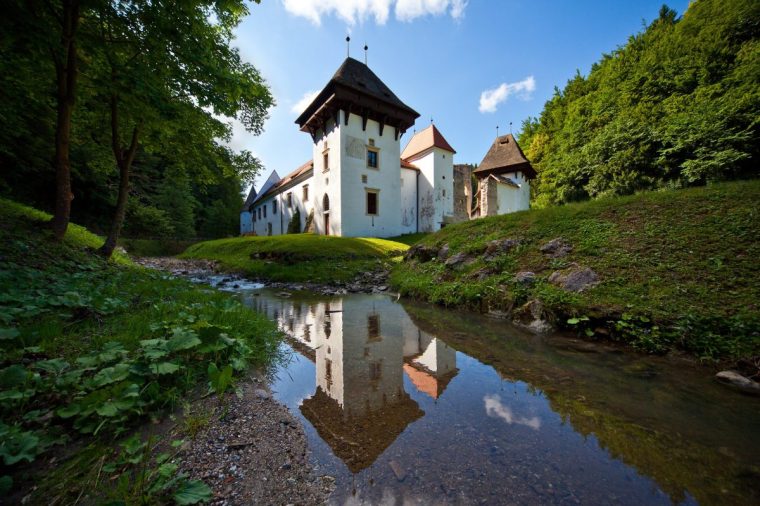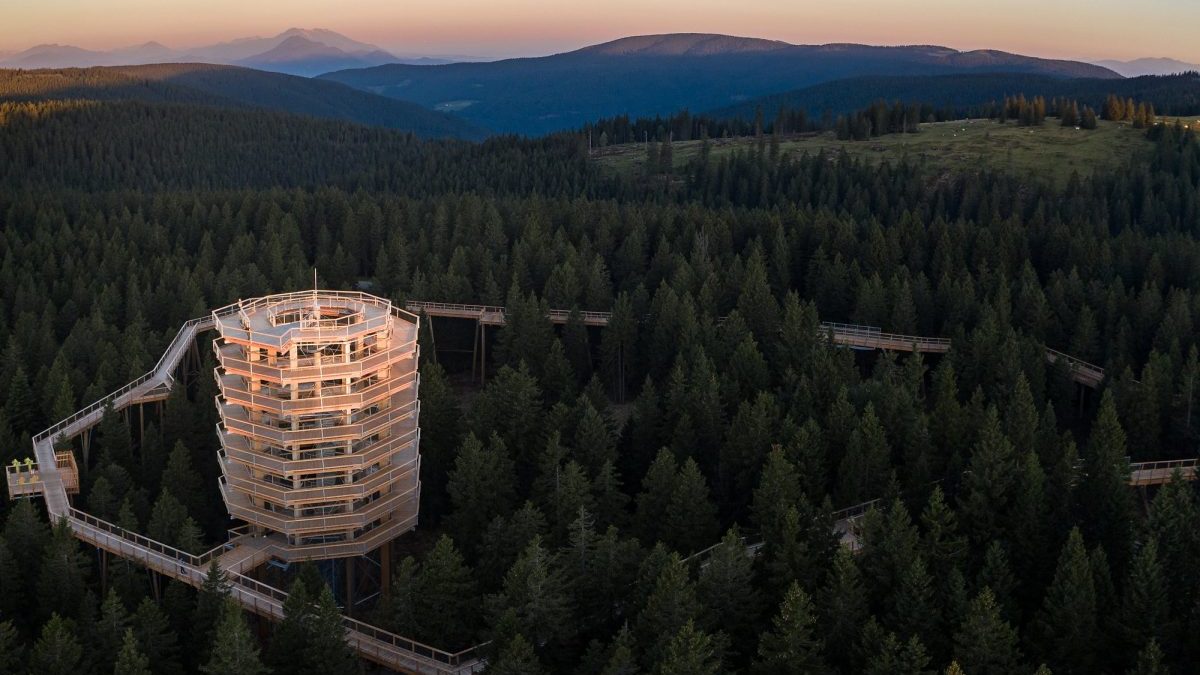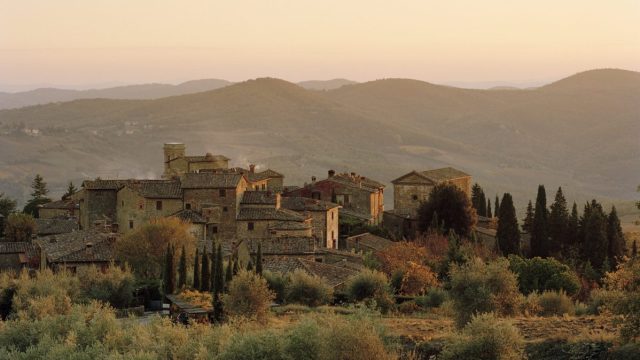It’s a common trait of Generation Z to have a taste for astrology or spirituality. A survey by YouGov found that one in four 18-29-year-olds say they are spiritual. I’m in my early 20s, and I friends who have visited psychics or who let the sun cycles dictate their habits. I’m more of a cynic.
So when I find myself on an “energy trail” that follows the walls of Slovenia’s oldest monastery, Zicka Kartuzija, I’m a little wary. Rocks have been placed in what our guide tells us are energy zones. I’m trying this ritual as part of a group, and we all stand around the stones listening to the gentle rush of a nearby stream and the rustle of leaves in the chilly wind. I soon fall into a slower rhythm.
 There’s an energy trail to follow at Zicka Kartuzija (Photo: Jost Ganta)
There’s an energy trail to follow at Zicka Kartuzija (Photo: Jost Ganta)
I’m in Slovenia, which is sometimes described as a cheaper alternative to Switzerland. With three mountain ranges – the Julian Alps, the Karavanke and the Kamnik-Savinja Alps – Alpine lakes and fairytale-like towns, Slovenia does have some resemblance to Switzerland. Yet it is less than half Switzerland’s size and has around a quarter of its population. And it is, indeed, often more affordable.
A four-star spa hotel where I spend the night is about half the price of similar countryside spa properties in Switzerland. Meanwhile, online database Numbeo shows that the cost of living in Slovenia’s capital, Ljublana, is 54.3 per cent lower than in Switzerland’s most popular city for tourists, Zurich. Restaurant prices in Ljublana are also 53.9 per cent cheaper than in Zurich. The Slovenian city has become a popular low-cost break, but there’s much to see beyond its old town – the countryside can offer a cosy autumn getaway.
Slovenia is positioning itself as a destination for wellness tourism, and I was tempted by its spas, as well as by its beauty and food. The spiritual experience at the monastery helps me to reset. Located in the northeast of Slovenia, Zicka Kartuzija was founded in the 12th century. Its remoteness means I don’t have phone signal. As someone who often clocks up screen time of more than 12 hours a day, it’s an unusual afternoon and a gentle nod to the monks who lived here under a silent order.
The most modern part of the monastery is a retractable roof over the church of St John the Baptist. It was built in 2022 as part of a renovation that cost €3m. When open, it offers views across the countryside. To the right is the Gastuz restaurant, established in 1467. The monastery once served pilgrims who were recovering from strenuous treks.
I try some soft hiking at my next stop. Around 40 minutes’ drive from the monastery is Treetop Walk Pohorje, in the primeval Pohorje forest. The 1.6km walk includes a 20-metre-high observation tower with spectacular views of the alps – even when there’s a coating of fog.
I’m told nature is a vital part of Slovenian culture and this reverence can also be experienced in its cuisine. Janez Bratovž, the owner-chef at JB Restaurant, in Ljubljana, focuses on regional ingredients. JB restaurant is listed in the 2024 Michelin Guide for Slovenia, and it is named after Janez, who Michelin describes as “the father of modern Slovenian cuisine”.
The JB ravioli, filled with cheese and pistachio, is my highlight. Slovenia’s chefs hope that next year, when the town of Nova Gorica is one of two European Capitals of Culture, more of the world will discover the country’s food scene.
Elsewhere, restaurants offer a more homely experience. Hiša Raduha, a family-run hotel and restaurant in the Upper Savinja Valley, has just six tables for dinner. Overlooked by Raduha mountain in the Kamnik–Savinja Alps, the enterprise is also surrounded by farms.
Martina, the head chef and owner, visits these farms to pick up ingredients such as trout, beetroot and onions. The estate, which has been passed down three generations, also offers unusual accommodation: tree houses modelled on hayracks, a freestanding rack that is used for drying fodder for animals. The treehouses come with hot tubs and views of the Savinja river.
“Guests have the space to unwind and let go,” says my host. Visiting reminds me of the benefits of switching off occasionally.
In spas clustered between mountains and valleys, I am forced to slow down. A night at Hotel Plesnik, in Logar Valley, is particularly memorable. I luxuriate in the stunning backdrop, take a dip in the heated whirlpool, and sweat it out in the sauna. Afterwards, I go on a guided, torchlit hike. My walk takes me within 6km of the Austrian border and is punctuated with a soundtrack of old folk tales recited by my guide.
I wake up the next day thoroughly relaxed. I’m not letting sun cycles rule my plans but, after a little time in Slovenia, I do feel much closer to nature.
Getting there
EasyJet has direct flights from Gatwick to Ljublana.
Car hire is available from Ljublana airport from around £35 a day.
Staying there
Hotel Occidental in Ljubljana has doubles from €138 (£115) per night, barcelo.com/en-ww/occidental-ljubljana/
Hotel Plesnik in Logar Valley has doubles from €220 per night, plesnik.si
Hotel Planja in Rogla has doubles from €77 per night, rogla.eu/sl/nastanitve/hotel-planja
Hotel Balnea in Dolenjske Toplice has doubles from €136 per night, terme-krka.com/si/sl/dolenjske-toplice/
More information
slovenia.info/en

